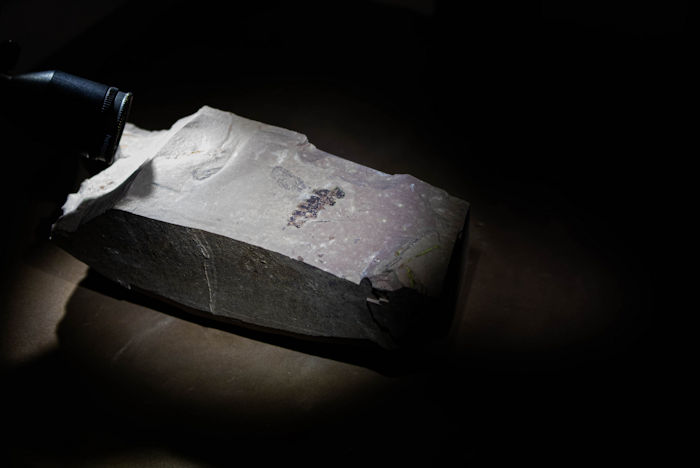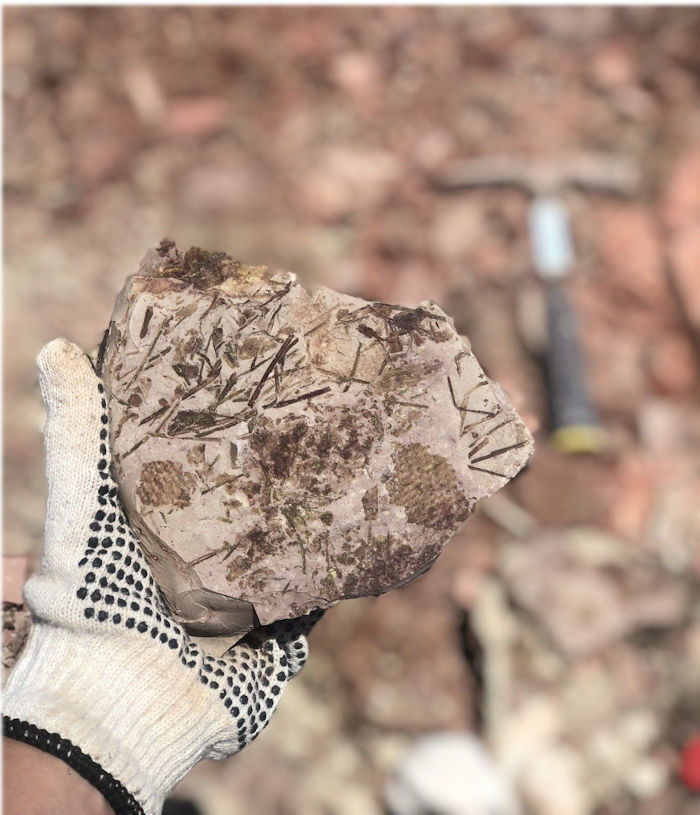Jan Bartek – AncientPages.com – Paleontologists from three universities in Rio Grande do Sul, Brazil, found a fossiliferous site lost for more than 70 years near the city of Dom Pedrito, the heart of the Campanha region and a city that borders Uruguay.
About 260 million years ago, even before the first dinosaurs, the ideal environmental conditions were present for the preservation of the organisms that inhabited this area in the past, which, through the fossil record, were protected in thin layers of rock and, now, little by little, they are being revealed.

Credit: Ferraz et al
The location where the fossils were recovered is known as Cerro Chato. It was discovered and described for the first time in 1951 by researchers who carried out geological mapping in the Pampa gaucho. At that time, fossils, especially of plants, were collected and described, evidencing the importance of the fossiliferous site for national paleontology since then. The technological resources available at the time, however, did not allow the exact geographic referencing of the fossiliferous site, which subsequently was lost for seven decades.
Finally, in 2019, the paleontological site was located again due to a combined effort with the participation of researchers from the Federal University of Rio Grande do Sul (Ufrgs), the University of Vale do Taquari—Univates and the Federal University of Pampa (Unipampa). “This fossiliferous site represents a real treasure for world of paleontology, especially for studies on the floristic evolution of a unique geological period in Earth’s history, the Permian,” explains researcher Joseline Manfroi, a paleobotanist who is part of the team responsible for the discoveries.
“For decades, the geographic location of this outcrop was unknown. It was sought as a true ‘treasure hunt’ and, fortunately, after so long, we will have the opportunity to continue writing this history, through the fossil record,” says Joseline.
The Cerro Chato fossiliferous site is currently the object of research by Master’s student Joseane Salau Ferraz at the Federal University of Pampa. The studies are developed using part of the structure of the Laboratory of Paleobotany and Evolution of Biomes from the Science Museum at Univates. The group of researchers is continuing the excavations with a three-year projection for field activities. “The area to be explored is huge. I estimate that we haven’t explored even 30% of all available space,” says Joseane.

Credit: Ferraz et al
Scientists have already collected more than 100 specimens of plant fossils, including groups belonging to the ancestors of today’s conifers and ferns, as well as animal fossils such as fish and mollusks. The fossils collected are deposited in the scientific collection of the Laboratory of Paleobiology at Unipampa, in São Gabriel.
“On previous expeditions, only the surface of this outcrop was prospected, a very thick limestone that was difficult to explore,” explains Joseane. “At that time, the materials were found because the surface was already relatively eroded. The researchers, however, were unable to explore deeper. If it’s difficult to work in a place like this today, even with technology, imagine the challenges that it represented in 1951. We went there last year with a backhoe. It seems even scary to think about, since fossils are very delicate. Somehow we were sure it was going to work, and it did,” she says.
“The fossils we are studying are of global importance because they are direct testimonies of the environmental changes that occurred during the Permian period. These studies will help us to retrieve information about the distribution of these plants around the world, as well as collecting evidence on what the climate was like at the time. This new location will attract many eyes to our state,” says Joseane.
The end of the Permian period, from when the found fossils date, is marked by the most severe mᴀss extinction known over geologic time, when more than 90% of life on Earth was decimated due to intense weather disturbances.
The owners of the farm where the fossiliferous site is located and the Municipality of Dom Pedrito were key players during the excavation rescue work, offering all the necessary support for the collections. “The excavation of fossils as fragile as the ones we found on Cerro is a delicate job. With the help of the municipality and all the support offered by the owners, it was possible to carry out a controlled and efficient excavation at the site. This is the only way we can rescue the most delicate and complete fossils,” says paleontologist Felipe Pinheiro, from Unipampa, who also coordinates the excavations.
For the owner of the area, Celestino Goulart, “the development of research is of great importance, as it helps to understand the changes that have taken place on the planet and brings a significant incentive to tourism in the Campanha region of Rio Grande do Sul.”

Credit: Ferraz et al
The team of paleontologists involved in the research says, “The research carried out in the Cerro Chato outcrop not only highlights the paleontological richness preserved in the strata of Rio Grande do Sul but also brings the opportunity to increasingly expand the community’s access to knowledge, scientific research and to promote regional geotourism.”
![]()
Article in Portuguese – here
Written by Jan Bartek – AncientPages.com Staff Writer





